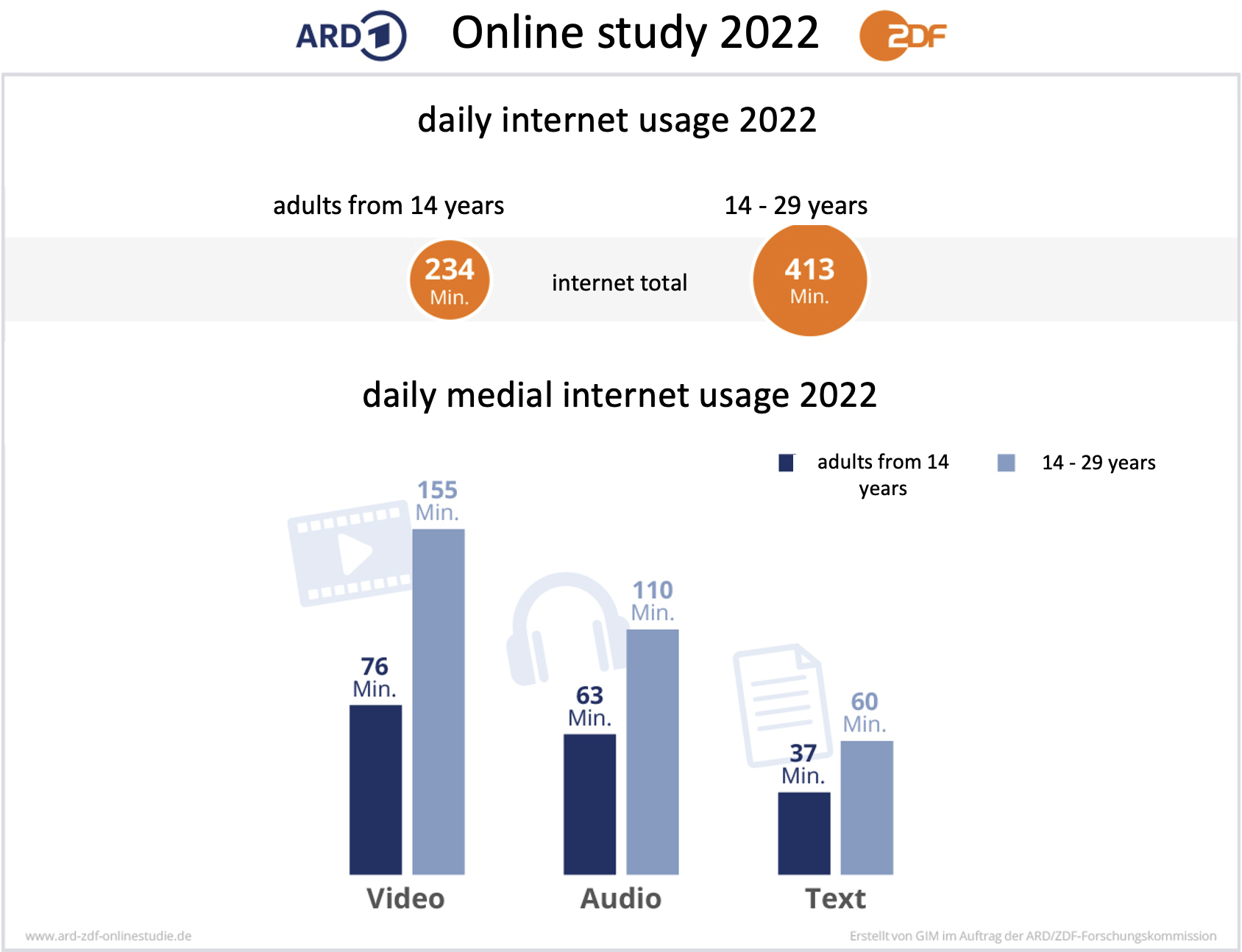The Changing Nature of Communication
In 1997, Netflix war set up for retailing DVDs via postal mail. There was no streaming to smart TVs, nor could you play music on Spotify or YouTube. People were still watching cathode ray TVs and using modems to dial themselves into the Internet – which is hard to imagine now. It was also the time when Germany’s public broadcasters ARD and ZDF launched their annual online survey on Internet use in Germany – initially returning an active user share of 6.5 percent of the adult population. What is the situation 25 years on?
Let me walk you through some of the upcoming digital changes in order to help you make well-informed and forward-looking decisions in the best interest of your company. My underlying source is the ARD/ZDF Online Survey of 2021.
Of course, it is no secret that Internet usage has continued to increase from one year to the next. In 2021, the proportion of the German population using the Internet equalled 94 percent, meaning 67 million people aged 14 or older, and everyone below the age of 50.
A closer look at the findings of the ARD/ZDF Online Survey in regard to the various use forms of audio contents on the Internet reveals three main use formats: podcasting, music streaming, and live radio on demand on the Internet. The online survey shows that podcasts on the Internet made significant gains in 2021. Developments over an extended period of time suggests that the use of podcasts, even if it belongs in the “rarely” category, has more than doubled since 2018. The net score of this form of use boasted the strongest year-on-year growth after an increase by 14 percentage points. Its upward trend points to a particularly strong potential of this market.
THE YOUNGER, THE MORE MOBILE
The world is steadily evolving, and one of the recent drivers of its evolution has been the coronavirus pandemic. Changes in people’s daily routines during the pandemic led to an increase in the use of smartphones. The younger people are, they more intense is their use of the mobile Internet. In fact, the younger age cohorts use almost exclusively their smartphone to go online. The survey reveals that 92 percent of the 18- to 39-year-olds use their mobile phone to browse the Internet. The share of those over 40 years of age who do the same is still 80 percent. Those below 40 spend an average of 31.8 hours online per week, which is almost four percent longer than the year before.
During the coronavirus pandemic, many Germans started to manage their professional and social networking online. Leading social media platforms for doing so include Twitter and LinkedIn, among others, although Facebook continues to top the list in terms of daily or weekly social media use. It is closely trailed by the Instagram platform, which is actually preferred among younger age groups, with TikTok, Twitter and LinkedIn lagging far behind.
TO A LARGE EXTENT, COMMUNICATION WILL CONTINUE TO BE CONDUCTED DIGITALLY VIA SMARTPHONES EVEN IF CO-WORKERS ARE RETURNING TO THEIR OFFICES AND GOING OUT WITH FRIENDS HAS BECOME AN OPTION AGAIN.
WHAT DOES THE DEVELOPMENT MEAN FOR YOUR COMPANY?
Being online is certainly important, but it is even more important to be able to offer customised options. This can take the form of social media channels, a podcast media library on the homepage or a dedicated app to go with your deliverables. You will find various examples among our client references.
Get in touch with us if you would like us to bring in our long-term agency experience to support you with your digital projects.
